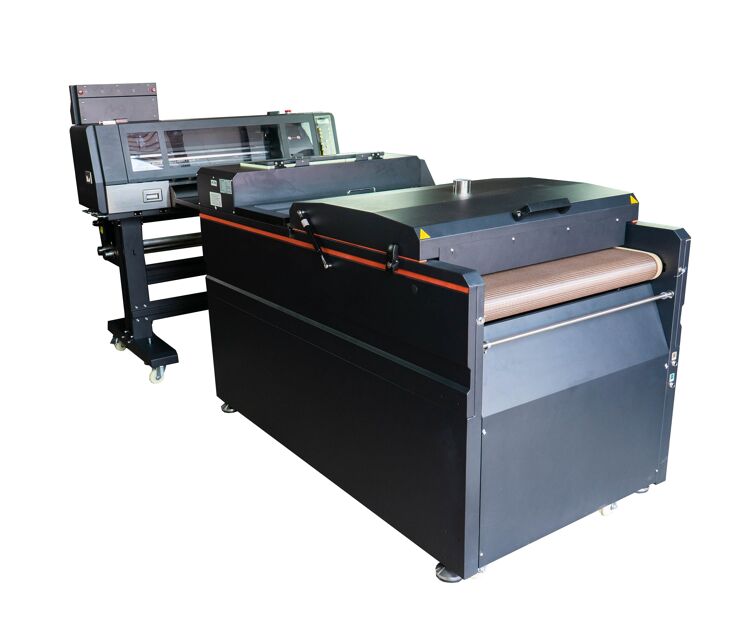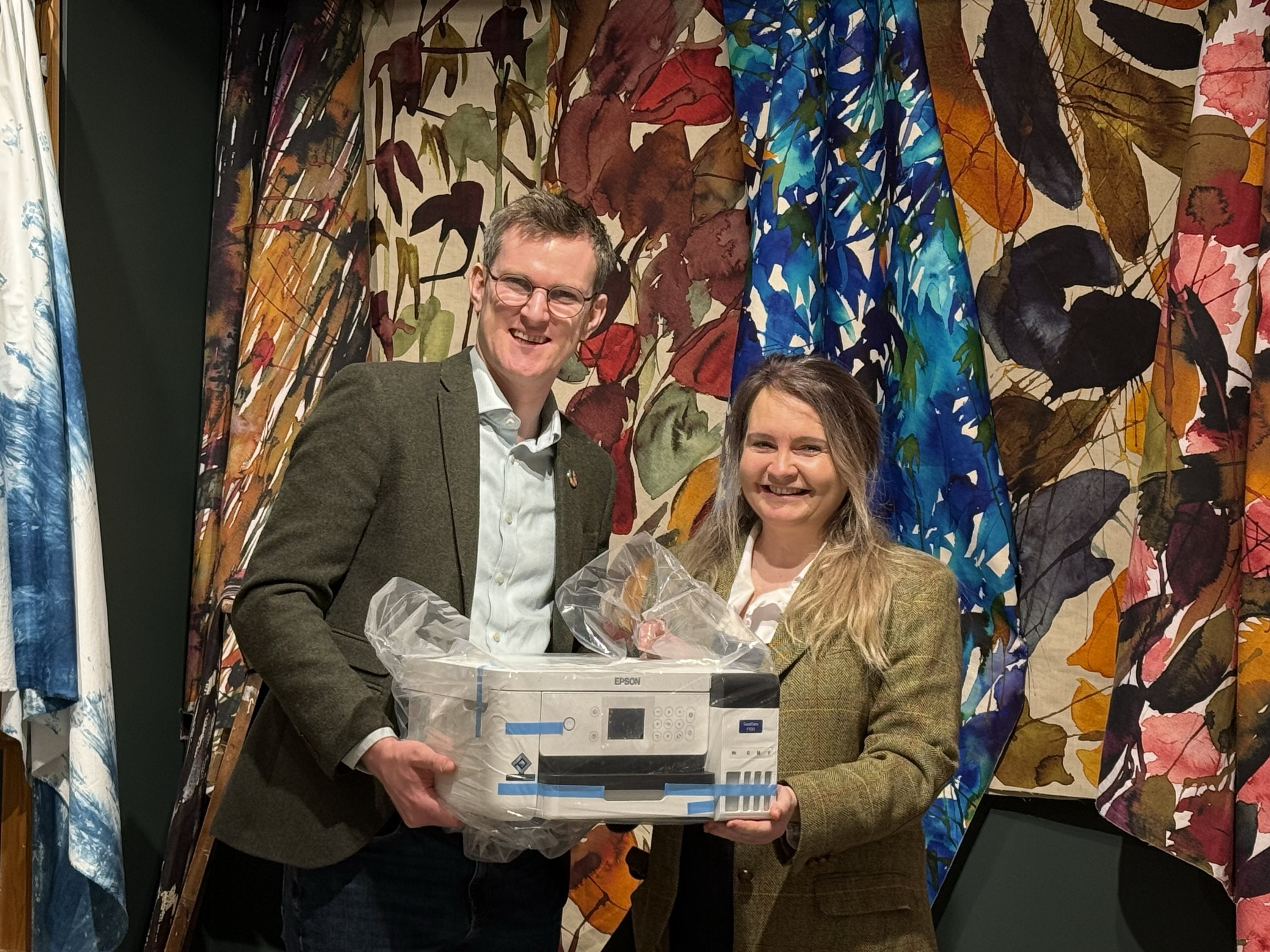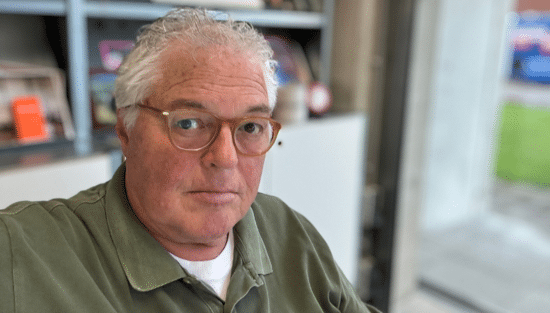Driving forward in textile print with DTF

An increasingly popular option for companies looking to move ahead of the competition in the textile print sector, Rob Fletcher takes a closer look at direct-to-film (DTF) technology and speaks with a specialist in this area to find out more about its core benefits.
It is no secret that the textile printing market is an expanding one that offers many different types of opportunities to companies seeking to grow their business. Whether this is adding a bespoke t-shirt printing service to your offering or taking on work within the interior décor segment, there is plenty to consider for print companies of all shapes and sizes.
But the key question that remains is how to best go about pursuing these key opportunities? What sort of technology should you be looking to run and what machines will open up the most work to your business?
In recent times, there has been an increasing using of direct-to-film technology. Also known as DTF, this form of print, as its full name may suggest, allows printers to print directly to film, opening up a wider array of printing options and helping those looking to move into more niche markets. Add in that DTF is typically more durable than other textile printing methods such as sublimation, and the product you create is likely to last longer and leave the customer feeling more satisfied.
For further insight into this area, FESPA.com sat down with Colin Marsh, managing director of Resolute, a specialist in DTF printers and consumables, who talked us through some of the core benefits of DTF.
 Caption: Colin Marsh is managing director of Resolute, a specialist in direct-to-film printers and consumables
Caption: Colin Marsh is managing director of Resolute, a specialist in direct-to-film printers and consumables
Efficiency is key to success
Marsh starts off strong by saying that DTF is poised for a pivotal role in the future of textile printing and those in this sector would be well advised to get on board with this technology in order to take full advantage.
“We foresee longer print runs achieved at faster speeds, potentially leading to the development of larger 1.2m printers equipped with matching finishing units - a very exciting prospect,” Marsh said.
“Plus, a key component of DTF is automatic cutting, which helps to reduce labour costs, reduce mistakes, and enhance throughput. This efficiency is reshaping how the industry operates. In essence, the future of textile printing is marked by speed, scale, and precision - attributes that are not just desirable but essential in a fast-paced, demanding market.”
As to what core advantages DTF systems offer over other technologies and methods, Marsh said the machines available from Resolute offer a significant advantage - higher production levels without a corresponding increase in labour.
“Larger companies have already embraced DTF technology,” Marsh said. “In the UK, several are producing over 60,000 shirts monthly through fully automated heat seal DTF transfer systems integrated with in-line cutters. This level of automation not only boosts efficiency but also significantly reduces operational costs, so it’s a strategic choice for businesses of all scales.”
 Caption: Resolute counts the R-Jet Pro DTF V8 among its direct-to-film solution
Caption: Resolute counts the R-Jet Pro DTF V8 among its direct-to-film solution
Setting and addressing trends
Looking to the wider market, Marsh highlighted how those print companies that opt to use DTF technology can address environmental trends that are shaping not just the textile print segment but the industry as a whole.
“The textile print market is remarkably robust, particularly in specific sectors such as DTF,” Marsh said. “However, it's not as favourable for methods that are less environmentally friendly. Processes and technologies that are less environmentally friendly are quite rightly facing scrutiny.
“With the growing emphasis on eco-friendly processes, we’re witnessing a shift towards sustainable printing solutions. Businesses are revaluating their production methods, materials, and waste management processes.”
Marsh also picked out how DTF technology is ideally suited to two trends that are having a major impact on textile print at present: variable data and personalisation.
“These are driving forces in the industry, especially in DTF,” Marsh said. “They reflect a major shift in consumer expectations - modern customers want products that are not just functional but personal and unique to them.
“New technology offers incredible flexibility, and it has a low environmental impact, aligning with the market's increasing demand for eco-friendly products. Additionally, there’s a notable focus on advancing DTF films, and exploring their expanding capabilities. This should lead to increasingly richer colours, finer details, and increased durability in printed designs.”
 Caption: Resolute also offers the R-Jet Pro DTF V4i printer to the market
Caption: Resolute also offers the R-Jet Pro DTF V4i printer to the market
Analysing the impact of AI
Looping back to automation and Marsh is keen to highlight the ongoing impact that artificial intelligence (AI) will have on the textile print market. He said the flexibility of DTF goes hand-in-hand with AI, as demonstrated by Resolute’s own advancements in this area.
“Our latest offerings leverage AI technology to streamline DTF processes,” Marsh said. “We have integrated automated cutting features to handle various file formats seamlessly. Our new multifunction printers can handle DTF transfers as well as product such as large-format labels and posters; it is essentially, two printers for the price of one.
“What is also exciting is our ongoing work on a more cost-effective system tailored for small to medium-sized businesses. Priced at around £25,000, this comprehensive system will allow businesses to produce up to 100 metres of film, printed and cut in a single day. These systems are designed to be operated by a single person, making high-quality, large-scale production accessible and manageable for smaller enterprises.”
With this in mind, Marsh looks ahead to what else we might expect from the DTF segment. He highlighted the rise of powderless DTF systems as one of the most exciting developments in recent times and the impact processes like this will have on textile print moving forward.
“These systems are not only pioneering the market but also transforming the industry landscape,” Marsh said. “Hybrid systems, integrating powderless technology, are gaining traction, particularly for producing high-quality retail prints and durable workwear. What’s remarkable is the flexibility they offer; switching from producing intricate retail designs to hard-wearing workwear is as simple as flicking a switch.
“Additionally, smaller-format powderless printers are set to be very popular in the retail sector. Shops, especially souvenir and photo shops, can now offer personalised garments in mere minutes, all facilitated by compact, powderless printers that require minimal space and zero powder application, making the process incredibly efficient and customer friendly.”
These closing comments offer an apt conclusion to this insight into DTF; this technology has the potential to make textile print much more efficient and customer friendly. Add in the high level of durability in DTF and is smaller impact on the environment, then it could well be that DTF is the best way forward for your business in the textile print market.
Topics
Interested in joining our community?
Enquire today about joining your local FESPA Association or FESPA Direct
Recent news

The Rise of B2B in Print-On-Demand: Mastering Personalisation to Drive Growth
Rusty Pepper highlights the B2B shift in Print-On-Demand, focusing on personalisation's role in driving growth. He discusses market differences between Europe and the U.S., challenges in global scaling, and strategies for successful implementation. Experts will share insights at FESPA 2025, covering automation, fulfilment, and market trends.

Navigating the Evolving Landscape of Fashion, Print and Sustainability
In this podcast, Debbie McKeegan and April Holyome – head of Product at the luxury Italian brand 16Arlington discuss the evolving landscape of fashion at the Epson Textile Academy.
.jpg?width=550)
Awarding Talent: Joanne O’Rourke Wins the Epson Eco Stories Textile Challenge and Trip to FESPA 2025
Joanne O'Rourke won the Epson Eco Stories Textile Challenge, receiving an Epson SureColor SC-F100 printer and a trip to FESPA 2025 in May. The award highlights the importance of supporting emerging designers for a sustainable print industry. These "digital natives" drive innovation, sustainability, and technological advancement, crucial for the sector's future.

The importance of Personalisation in Direct Mail - The Power of Print
Jeroen van Druenen, CCO of Jubels discusses how personalised direct mail, especially print, boosts engagement and ROI by tailoring content to individual recipients. Using variable data printing (VDP), marketers create unique designs and offers, enhancing relevance and fostering stronger customer relationships. Physical mail's tangibility and lasting impact further amplify personalisation's effectiveness.